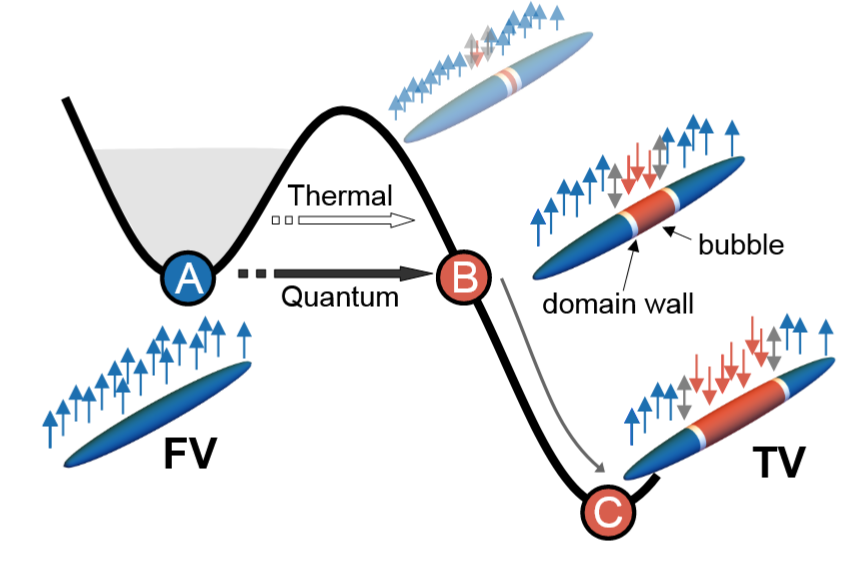Riccardo Cominotti (CNR-INO, Trento) talks about 'False vacuum decay via bubble formation in ferromagnetic superfluids'
Riccardo Cominotti (Pitaevskii BEC Center, CNR-INO, Università di Trento, Italy) gives a webinar about ‘False vacuum decay via bubble formation in ferromagnetic superfluids’.
A classical system can have multiple equilibrium states at different energies; the absolute ground state is a stable configuration, while the other local energy minima are metastable. In a quantum field theory, quantum fluctuations can trigger the macroscopic tunneling of the field from a metastable state (the false vacuum) to the ground state (true vacuum) through the many-body energy barrier [1]. The decay of a false vacuum, which is thought to manifest via the nucleation of spatially localized bubbles of true vacuum, is a fascinating phenomena for a rich variety of systems, ranging from condensed matter [2] to cosmology [3]. Nevertheless, its experimental verification has been elusive so far, due to the extreme energy scales involved and the lack of tunable parameters. Here, I will present the first experimental evidence of false vacuum decay in a metastable ferromagnetic superfluid [4]. In this novel platform, realized with ultracold sodium atoms [5], the superfluid acts as the quantum field, and macroscopic tunneling events are observed through the spontaneous nucleation of spin bubbles. Our results find good agreement with numerical simulations and instanton theory, opening the way for the simulation of out-of-equilibrium phenomena in a highly controllable and tunable atomic system.

References
[1] The Fate of the False Vacuum. 1. Semiclassical Theory, S. R. Coleman, Phys. Rev. D. 16, 1248 (1977)
[2] False vacuum decay in quantum spin chains, G. Lagnese et al., Phys. Rev. B. 104 L201106 (2021)
[3] Phase transitions in the early universe, M. Hindmarsh et al. SciPost Phys. Lect. Notes 24 (2021)
[4] False vacuum decay via bubble formation in ferromagnetic superfluids, A. Zenesini, A. Berti, R. Cominotti et al, Nat. Phys. (2024).
[5] Ferromagnetism in an Extended Coherently Coupled Atomic Superfluid, R. Cominotti, A. Berti et al.